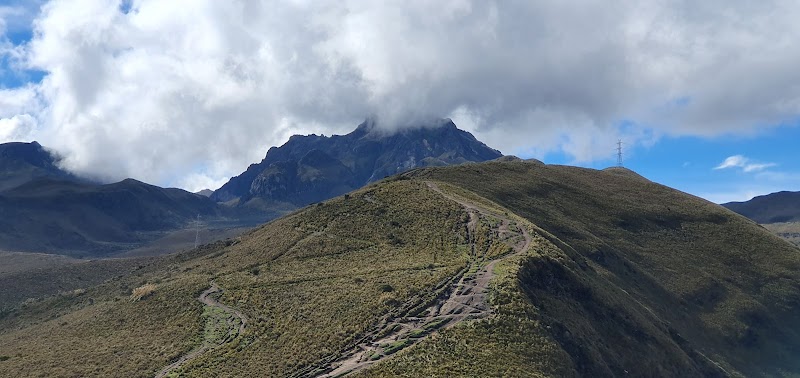
Running Quito: The Ultimate Guide to the Quito Marathon Experience
The Quito Marathon offers a unique challenge set high in the Andes, combining historic city routes with the demanding altitude of Ecuador's capital. This guide prepares you to face the race with practical tips alongside vivid descriptions of the course and atmosphere.
Acclimate Before Race Day
Spend 3-5 days in Quito adjusting to altitude to minimize dizziness and fatigue during the marathon.
Hydrate Early and Often
The thin mountain air dries your body quickly; drink water steadily starting days before and use on-course hydration stations.
Wear Breathable, Layered Clothing
Prepare for temperature swings with moisture-wicking layers: cool mornings can warm into strong sun by midday.
Choose Shoes for Mixed Terrain
Opt for running shoes that offer grip on pavement and some uneven cobblestones without sacrificing comfort or speed.
Running Quito: The Ultimate Guide to the Quito Marathon Experience
The Quito Marathon is more than a race; it’s an engagement with a city that challenges both runner and environment with stubborn altitude, unpredictable weather, and streets steeped in history. At 2,850 meters (9,350 feet) above sea level, Quito dares your lungs to adjust, demanding respect from the very first step. The course weaves through a cityscape where colonial architecture leans against the backdrop of Andean peaks, each stride offering an unvarnished view of life at altitude.
Covering a full marathon distance of 42.195 kilometers (26.2 miles), the route blends asphalt streets with stretches of urban parks and occasional cobblestones, requiring both stamina and agility. Elevation gain is modest—roughly 300 meters (1,000 feet)—but the altitude turns every incline into a battle against thinning air. The marathon’s terrain doesn’t knock you down, but it won’t hand you the prize; it insists on focus, pacing, and hydration.
Preparing for this race means gearing up for Quito’s fluctuating weather. Morning chills give way to sunlight that can surprise with fierce intensity, making layered clothing and sun protection essential. Water stations line the course, but bringing your own hydration pack remains a wise choice to stay ahead of dehydration. Running shoes with solid traction will help navigate sections where the pavement meets rougher surfaces, and consider breathable socks to combat the persistent dampness.
The marathon morning crackles with camaraderie and determination as runners from around the globe gather. The air carries a mix of nerves and excitement, punctuated by the vibrant cheers of locals who regard the marathon as both a sport and a cultural event. This is a test of physical limits and mental endurance against a backdrop of Ecuador’s second-largest city—the Andes breathing just above the rooftops.
Besides the physical challenge, the Quito Marathon offers unique cultural touchpoints: passing iconic sites like Plaza de la Independencia, the intricate churches of the historic center, and the bustling Avenida 10 de Agosto. It’s a race veterans recommend as a way to surface a deep connection to Ecuador’s capital, far beyond what a casual tourist encounter delivers.
For those thinking beyond the finish line, local markets and food stalls await with hearty, altitude-friendly fare—think quinoa, fresh fruit, and rich stews that replenish without overwhelming. Rest days can include exploring nearby Andean trails or soaking in the city’s thermal baths. The Quito Marathon is a demanding adventure, fiercely itself, yet accessible enough to invite runners to test their limits and experience Ecuador through motion.
Every step forward here is more than distance covered; it’s a conversation with an environment that’s neither easily conquered nor politely tamed. The Quito Marathon makes clear that success depends on respect—for your body, the city’s altitude, and the unpredictable Andean sky.
Nearby Trips
All Adventures
Boat Charters
Water Activities
Adventures near Quito, Ecuador
Discover the unique and memorable adventures that make Quito, Ecuador special.
Frequently Asked Questions
How does Quito’s altitude affect marathon runners?
At nearly 2,850 meters, oxygen availability is about 30% lower than at sea level. This reduces aerobic capacity, making pacing and acclimatization critical to avoiding early fatigue.
Are there water stations along the marathon route?
Yes, the course includes multiple hydration points offering water and electrolyte drinks, but many runners prefer to carry personal hydration for timely intake.
Can beginners participate in the Quito Marathon?
While challenging due to altitude and distance, beginners with adequate training and acclimation can complete the race, though preparing for the elevation is key.
What cultural experiences can runners expect during the event?
The route passes through areas rich in colonial architecture and local markets. Spectators often cheer with traditional music and dance, offering a festival atmosphere.
Is the marathon route safe for runners?
The event is well-organized with road closures and volunteers assisting runners, but uneven surfaces in some areas demand attention to foot placement.
What’s the best way to recover after the marathon in Quito?
Post-race recovery includes hydration, local cuisine rich in carbohydrates and protein, and gentle walks in nearby parks or thermal baths that soothe sore muscles.
Recommended Gear
High-Quality Running Shoes
A pair designed for pavement but with enough grip for cobblestone and slight unevenness ensures comfort and safety throughout varied sections.
Hydration Vest or Belt
Carrying water allows consistent hydration between stations, critical at altitude to combat dry air and sustained effort.
Lightweight Layered Clothing
Mornings can be fresh while afternoons warm quickly; layers help maintain comfort without overheating.
Sun Protection (Hat, Sunglasses, Sunscreen)
UV exposure is strong on the equator, and reflections off city streets intensify it—protect skin and eyes to maintain performance and health.
Local Insights
Hidden Gems
- "Mirador de Guápulo, a less crowded viewpoint offering sweeping city panoramas."
- "Bermeo Park’s trails for easy post-race recovery hikes."
Wildlife
- "Watch for Andean hummingbirds flitting near flower beds along the route."
- "Occasional sightings of the small and elusive Ecuadorian squirrel in city parks."
History
"Quito’s historic center, declared a UNESCO World Heritage Site, reflects centuries of colonial and indigenous influences that the marathon route highlights with every kilometer."
